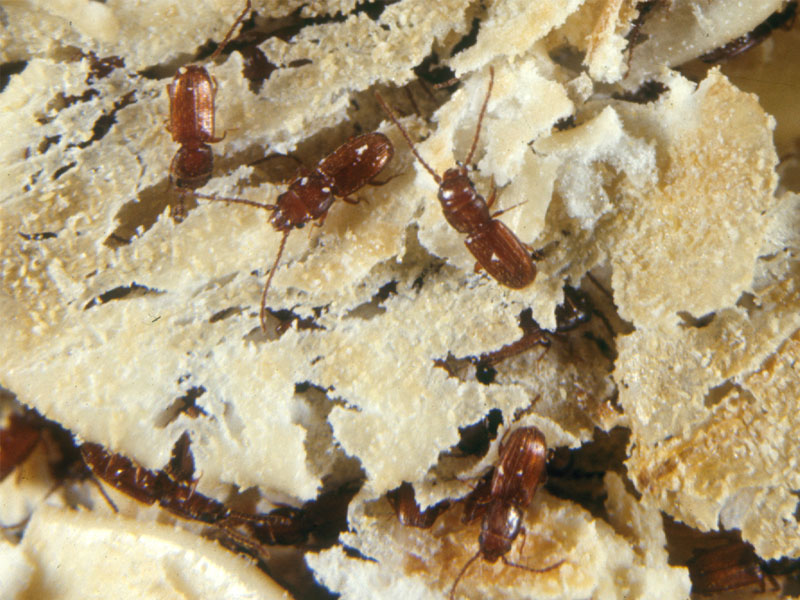Flat grain beetle infestation

The Flat Grain beetle is part of the ‘bran bugs’ family. This family consists of the Flour mill beetle, the Rusty grain beetle and the Flat grain beetle. Similarly to the other stored product insects, the Flat grain beetle can be found in places, where cereals are stored, as well as foods such as flour, wheat, dried fruits, nuts, barley, rice, corn, etc… This pest can also be found infesting products like chilies and cassava root, which is typical for Latin America and parts of Africa but have been imported in the United Kingdom.
The Flat grain beetle is not considered dangerous to people or pets, however, the food infested by the pest should be disposed of. This stored product insect may cause nuisance in residential properties, whereas in a commercial warehouse or industrial grain storage it may result in a significant loss of business.
Flat grain beetle treatment and control

A Flat Grain beetle infestation can be eradicated if it is spotted at an early stage. For commercial premises, regular checks would prevent the occurrence of the infestation in the first place or, in case one has developed, they will help to reduce the amount of damaged products.
For domestic premises, regular cleaning of the kitchen and the areas, where stored products are kept, as well as sanitisation and regular checks of these products. All newly-brought products should be checked and placed into a glass jar with a lid, so that any access of the pest can be limited. The property should be thoroughly cleaned and all infested products should be disposed of. Paper or foil lining should be placed on the shelves before replacing the products.
In case there is an infestation already present and it cannot be dealt with cleaning, Prime Pest Control offers heat treatment and fumigation services, which will eradicate the problem and will leave your property or business pest-free. Both treatments the heat treatment and the fumigation are complex, which means that they will not only help ridding you of your stored product pest but also of other pests, such as bed bugs, carpet mites, booklice, etc… The advantage of the heat treatment, compared to the fumigation, is that it is eco-friendly, as it only uses high temperature for the eradication of all life stages of the pests.
Prime Pest Control offers Flat grain beetle treatment, control and prevention services with British Pest Control Association (BPCA) trained and experienced pest technicians, who will not only inspect and treat your property or business premises, but they will provide you with a specially-tailored action plan for your personal or business needs and requirements. Regardless of your location, if you are based anywhere in London – North, South, West and East or in the surrounding counties, you can book your appointment with one of our pest technicians at a suitable to you time.
About Flat grain beetles
The Flat grain beetle (Cryptolestes pusillus) looks similarly to its other family members – the Flour mill beetle and the Red rusty beetle. It has a reddish-brown colour and its length is usually 1.5 mm – 2 mm. This pest is shiny and has a long antennae, which can sometimes reach more than half of its body size. The back of the Flat grain beetle is square. The larvae of the pest is white to yellow in colour and its length is about 3 mm. The adult form of this beetle readily flies.
The average Flat grain beetle female lays about 242 eggs, usually in broken kernels or around them and their debris. The eggs are white and once they hatch, the larva would burrow in the broken or damaged kernels, where it can find a food source – the germ of the kernel. The total larval instar stages are 4, where the last one forms a silken cocoon, which also serves as the home of the newly-formed Flat Grain beetle adult. After 3-4 days the adult beetle will come out of the cocoon. The whole cycle of the Flat grain beetle takes between 22 and 26 days to complete.
